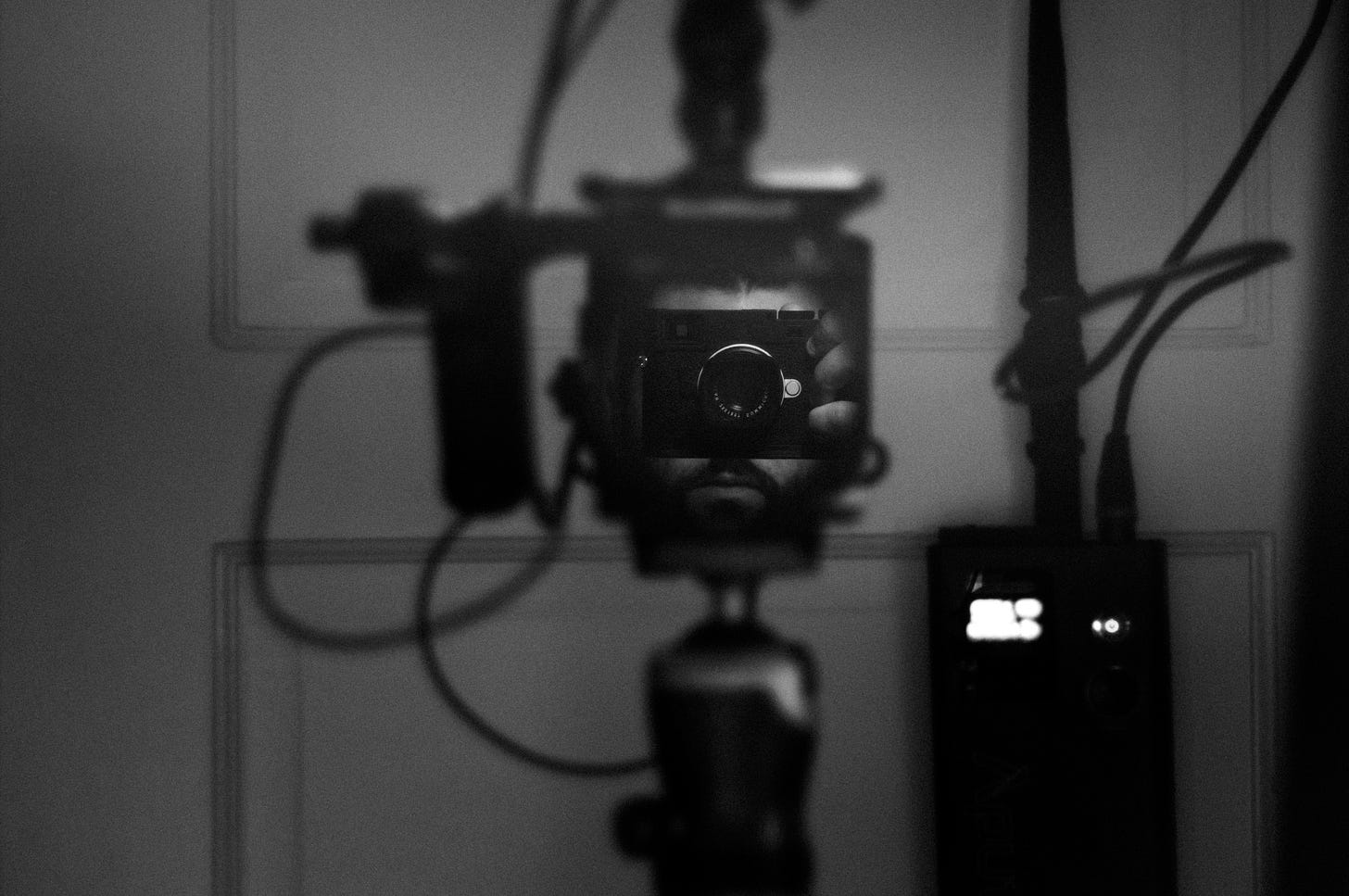I started off my morning yesterday on a long call with my good friend, collaborator, and soon-to-be fellow MFA candidate, Jonah Markowitz. The main reason for the call was to start figuring out a place to stay during the two weeks we’ll be on campus this summer for grad school. (Turns out, renting a house in Hartford, CT is way more expensive than either of us expected.)
Somehow, the conversation drifted to Instagram. We were both reflecting on how great the app used to be and how far it’s strayed from what it was originally meant to do. These days, it feels like Instagram is trying to push everything except photography as part of its constantly shifting algorithm. Influencers, paid media, video, stories—it’s all being prioritized over still images. At this point, the only noticeable engagement I get is when I post work that has 10 to 20 people tagged (and a client has spent hundreds of thousands of dollars on it), I’m posting about traveling somewhere cool for a job, or I share a photo of a fancy camera to my stories with a few thoughts attached.
It got us both wondering if Instagram’s algorithm is primarily prioritizing content that pushes users to want more, as quickly as possible—whether that’s material things, experiences, money, freedom, or some aspirational version of all of the above.
It got me thinking. Maybe this was Instagram’s plan all along. The app used to foster a sense of community among people who wanted to share their perspectives on the world around them. Hashtags were once a way to connect and amplify. I’m pretty sure I got a notification a few months back saying that Instagram would be doing away with following hashtags altogether, or at least that they wouldn’t have the same impact they once did. To be fair, they haven’t for a while. Who knows if they actually followed through with that.
Maybe imagining some evil IG overlord behind an array of monitors plotting against the users who truly championed the platform’s original purpose is a little paranoid. I work alone in a home office, so cut me some slack. Still, it all feels a little suspicious. I get that things change and evolve. I get that my profession makes me look at the app through a more critical and serious lens. I also get that even when I think a photo I’ve shared is strong, not everyone else will. But I feel like a lot of my peers would agree—shit’s kinda wack now!
Why does the story I post with my Leica MP get 780 views and 23 responses, while the one with a triptych of thoughtful photos—images that took me an entire afternoon to shoot, edit, and carefully space inside a 9x16 black background—gets 80? Why does a singular color photo in my feed barely register in the analytics, but a snippet from a client film pulls in thousands of views? God forbid you post a black and white photo...
You either have a ton of followers from a time when Instagram was better than this, you paid for a bunch of followers, or your profile is set to private and you’re just sharing personal photos. But for those of us who once saw the platform as a tool to engage professionally and maybe land commercial work, it’s turned into a place of overthinking and added stress. At least for me, it has.
So …
And so I think I’m officially done posting the still images and motion work that I care about personally. When we share work that actually means something to us and it gets no engagement—whether that’s a conversation or just a simple, mindless “like”—we tend to internalize it, and that’s super fucking unhealthy. The point of making photos is to make photos. For me, it’s how I learn more about myself and the world around me. The goal was never to make photographs for the sake of validation.
Will I still post commercial motion and stills work? For sure. Gotta play the game on some level. But the long-term, personal stills and motion work? Probably not. I think that’s where the appeal of connecting through platforms like this Substack or even YouTube really starts to make sense. Maybe this will be the place where I begin sharing more of the personal, project-based work I want to start meaningful conversations around.
Wrapping Up
I do hope that at some point, people will get so fed up with the direction the app is heading that Mosseri and co. will have no choice but to make some changes in favor of independent makers. But until then, the chips are going to fall however the highest bidder decides they should.
And rather than paying to “choose your own algorithm,” we’ll just keep getting opportunities to purchase “verification” (read: validation) to feel more culturally significant than Instagram’s current, broken algorithm would have us believe we are.




